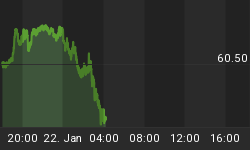Third quarter earnings season is underway, and one of the most closely watched stocks just presented its scorecard: Tesla Inc. (NASDAQ:TSLA).
Tesla reported record-breaking results, beating expectations on EPS and revenue. Though the company's stock dropped briefly following the report, Tesla has been on a tear ever since, even crossing the $900 mark in early trading Friday morning.
A few weeks ago, Tesla reported that it delivered 241,300 electric vehicles during the third quarter of 2021, more than 70% higher than last year’s deliveries for the same period and significantly better than the 220,900 deliveries predicted by Wall Street.
However, the rosy growth numbers have not stopped a cross-section of Wall Street from raising concerns about the stratospheric valuations in the space.
According to Bernstein analysts, the 15 largest ICE manufacturers command a collective market cap of $1.2T compared to $1.1T collective valuation of pure-play EV vendors, despite the fact that the former sell 99% of all new vehicles globally while the latter manage a miniscule 1%.
And that could prove problematic for EV stocks in the not-so-far future.
Steep valuations
Bernstein’s Tony Sacconaghi makes a pretty succinct point about how the market values EVs versus traditional ICE makers:
‘‘The thinking–of course–is that pure play EV vendors will ultimately come to dominate the automotive world. In 2014, they accounted for 15% of all BEVs sold. Today they account for 28%. However, even if they ultimately were to account for 50% of all EVs sold by 2030 – which may be aggressive – it remains difficult to justify their current valuations.’’
Bernstein is worried that the market is assuming that traditional OEMs will not be able to deliver competitive EV offerings in the future, or they will be very delayed in doing so. Further, the market appears to think that EV upstarts will be able to generate significantly more profit per car, mainly by taking advantage of better distribution and autonomy/add-on services. The analyst points out that this assumption is not entirely without merit since full autonomous driving priced at $10K per car would radically change the margin (and valuation) profile of the industry.
But Sacconaghi begs to differ with the assumption that pure EVs like Tesla will always maintain a huge operational advantage over their late-to-the-party ICE rivals:
"That said, our contention is that the automotive industry is an increasingly global and hypercompetitive industry and we believe that surplus profits and technology innovation will likely be competed away over time, as has been the case historically."
Powerful megatrends
There’s no denying that the EV and electrification drive are some of the most powerful megatrends of our time–and will continue to dominate for decades to come. Bloomberg New Energy Finance (BNEF), just 2.7 out of 100 vehicles sold last year were EVs, with EVs expected to account for just 8% of the global fleet by 2030.
However, EVs could reach 31% of the global fleet by 2040, as per BNEF estimates.
Once written off as a niche play for ESG-minded investors, EVs are fast moving to the mainstream with a recent Pew Research survey revealing that 7% of U.S. currently have a plug-in electric or hybrid vehicle, with nearly 4 in 10 saying they would consider buying one as their next purchase. The pace of EV adoption is considerably higher in Europe and China.
That said, EV companies remain vulnerable to short-term headwinds including valuation concerns and supply chain bottlenecks. We have already seen this play out with renewable energy stocks: the iShares S&P Global Clean Energy Index ETF (NASDAQ:ICLN) has cratered nearly 20% in the current year, badly underperforming its fossil fuel equivalent the Energy Select Sector SPDR ETF (NYSEARCA:XLE) which has gained 51.4% over the timeframe due to the said headwinds.
Whereas Tesla might have established a strong head start on the competition in the EV market that it is unlikely for anyone to pass them anytime soon, newer pure-play EV upstarts such as Fisker (NYSE:FSR), Faraday Future Intelligent (NASDAQ:FFIE), Lordstown Motors (NASDAQ:RIDE), Nikola (NASDAQ:NKLA), Lucid Motors (NASDAQ:LCID), Nio (NYSE:NIO), XPeng (NYSE:XPEV), Li Auto (NASDAQ:LI), Canoo (NASDAQ:GOEV) and Rivian (RIVN) are likely to remain volatile over the next few years.

















